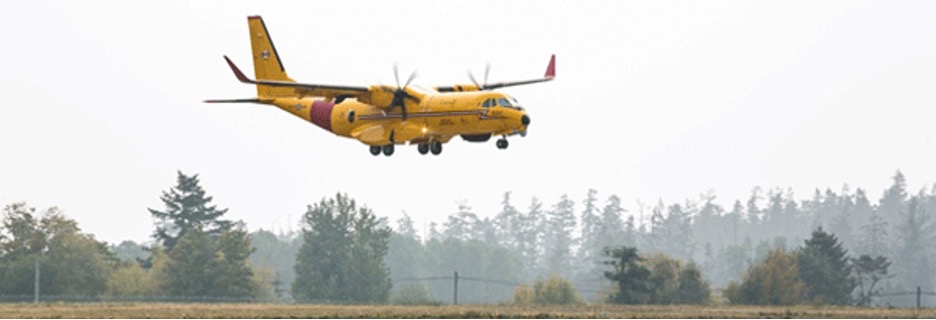Canada’s New Search and Rescue Aircraft
On September 25, 2020,
the Royal Canadian Air Force (RCAF) marked the arrival of the first aircraft of its future fixed-wing search and rescue (SAR) fleet. The Government of Canada is equipping the RCAF with the modern and effective aircraft it needs to continue its critical life-saving search and rescue missions across Canada’s vast and challenging territory.
The Airbus aircraft, designated CC-295 for Canada, landed at its home base on 17 September and is the first aircraft to be delivered on a $2.4 billion contract (including taxes) for 16 new CC-295 fixed-wing search and rescue aircraft to replace Canada’s fleets of Buffalo and Hercules H aircraft. The contract, awarded to Airbus Defence and Space in December 2016, is for a period of 11 years, with the option to extend up to an additional 15 years of in-service support. Airbus has formally delivered three aircraft to date, the second of which is scheduled to arrive in Canada in the coming weeks. Deliveries will continue until 2022.
The new fleet will be called Kingfisher. The kingfisher has long been recognized among the First Nations of the Northwest for its speed and agility, as well as its keen searching and hunting skills. Found all across Canada, the kingfisher well represents the abilities of search and rescue crews to accomplish their lifesaving role.
Specifically designed to perform search and rescue missions across Canada, the Airbus CC-295 aircraft is equipped with integrated sensors that will allow crews to locate persons or objects from more than 40 kilometers away, even in low-light conditions. Its communications systems will increase interoperability with other search and rescue assets, such as the CH-149 Cormorant. The fleet of 16 aircraft will be replacing the CC-115 Buffalo and CC-130H Hercules fleets in their search and rescue role at four locations across Canada, and represents a value of $2.4 billion.
The aircraft received earlier this month will remain at 19 Wing Comox while the RCAF completes aircrew training, followed by operational testing. During the transition period and while the CC-295 Kingfisher is being operationalized, fixed-wing search and rescue services will continue through existing fleets, along with the CH-149 Cormorant and CH-146 Griffon helicopters.
The delivery of this aircraft marks an exciting new chapter in Canada’s long and proud search and rescue history, and this project has created hundreds of new jobs for Canadians. The CC-295 contractor, Airbus Defence and Space, continues to make investments into the Canadian aerospace and defence industry through the Industrial and Technological Benefits Policy. Strategic work packages directly related to the aircraft continue to provide Canadian companies with opportunities to participate in global supply chains and create high-value jobs.
This first aircraft, tail number 501, was formally accepted by Canada in Spain on 8 December 2019, and was delivered to Comox following additional testing and evaluations.
The CC-295 Kingfisher will be based across southern Canada in Comox, Winnipeg, Trenton, and Greenwood. The aircraft will arrive in phases as crews are trained in turn at each location.
Part of this project includes the construction of a new training centre that is being built in Comox by Canadian training leader CAE. Due to be inaugurated later this year, the centre will be used to train both maintainers and aircrews. The design include ten classrooms and sophisticated training devices such as a full-flight simulator, a cockpit procedures trainer, a sensor station simulator, and an aircraft maintenance trainer. CAE is responsible for providing the complete aircrew and maintenance training solution that will populate the new fixed-wing search and rescue training centre.
Canadian company AirPro will provide day-to-day management of all in-service support for the provision of engineering, logistics, maintenance, training, IT systems, infrastructure and materiel support throughout the contracted CC-295 life cycle.
Canada’s Industrial and Technological Benefits (ITB) Policy applies to this contract, ensuring that Airbus Defence and Space invests an amount equal to the value of the contract in the Canadian economy. Significant high-value jobs have been and will continue to be generated from this contract with Canadian companies such as PAL Aerospace, Pratt and Whitney Canada, CAE, and AirPro.
Featured photo: The first CC-295 lands at 19 Wing, Canadian Forces Base Comox, in British Columbia on 17 Sept 2020 (Photo © Garry Walker)
This article was published by Front Line Defence on September 25, 2020.

